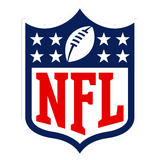The Los Angeles Lakers’ early exit from the 2025 NBA playoffs should prompt careful reflection during this offseason.
What could they have done differently? How can they revamp their roster to advance further next season? What do they need?
With the NBA conference finals underway, here is one lesson the Lakers can learn from each team as they construct their roster this offseason.
New York Knicks: The ‘heliocentric’ blueprint
The New York Knicks’ roster build is the most replicable for the Lakers among the conference finalists.
Like Los Angeles, New York is built around a heliocentric star with defensive limitations. Entering the conference finals, Jalen Brunson was the only player still playing with a usage percentage above 30 percent (for comparison’s sake, Luka Dončić had a 32 percent usage percentage against the Minnesota Timberwolves in the first round). And like the Lakers, they’re not as deep as the rest of the field, with Knicks coach Tom Thibodeau relying on seven rotation players for most of the postseason.
Advertisement
One key difference between the two rosters is the Knicks’ makeup around Brunson. They have multiple 3-and-D perimeter players (OG Anunoby, Mikal Bridges, Josh Hart and Miles McBride) and two quality centers (Karl-Anthony Towns and Mitchell Robinson). The big, scrappy group accentuates Brunson’s strengths and covers for his weaknesses.
As the Lakers look to build around Dončić, they have a stronger offensive foundation than the Knicks. Their superstar is better. He’s also bigger, leading the way to greater lineup versatility, and less of a defensive liability. They have a couple of secondary shot-creators in LeBron James and Austin Reaves, who are more capable ballhandlers and passers than any of the tertiary pieces in New York.

How the Knicks built around Jalen Brunson could be instructive for the Lakers. (Gary A. Vasquez / Imagn Images)
Finding an Anunoby, Bridges, or Hart is going to be difficult, if not impossible, for the Lakers this summer. Any of those three would immediately start and be the Lakers’ best perimeter defender. But they need to at least try to find an upgrade, exploring the trade market and free agency for players that slip through the cracks or suddenly become available due to looming salary-cap restrictions.
The Lakers don’t necessarily need 12 rotation-caliber players like the Oklahoma City Thunder or 10 like the Indiana Pacers. They don’t really have the resources to acquire that kind of depth, anyway. But they need more than five or six rotation-caliber players, like they had this past postseason. They can replicate the Knicks’ success by surrounding Dončić with as much size, defense and athleticism as possible.
Oklahoma City Thunder: The power of identity
Much has been made of the Thunder’s No. 2 spot behind newly minted MVP Shai Gilgeous-Alexander, but it’s become clear through these playoffs that their second star is their historic defense.
Through 12 playoff games, the Thunder’s 100.7 defensive rating is first in the league by 7.1 points per 100 possessions. That’s the lowest defensive rating since 2016 (minimum eight playoff games) and the most significant gap between the No. 1 and No. 2 defense (Minnesota at a 107.8 defensive rating) in a postseason in the tracking era, which began in 1996-97. Depending on how the rest of their season unfolds, they have a strong case to be considered the best defense of the 21st century.
Advertisement
Oklahoma City has a clear identity. Regardless of how they perform offensively, the Thunder know they can rely on their defense to keep them in most games.
The Lakers, meanwhile, didn’t have an identity in these playoffs. There was no calling card. They excelled consistently in … nothing. They only ranked in the top five in two team advanced metrics: assist percentage (fifth) and true shooting percentage (fourth). Otherwise, they were average to below average to downright awful (16th — aka last among playoff teams — in defensive rebounding percentage) in most other categories.
Los Angeles has the foundational offensive talent to lean more toward the offensive end next season. But if that’s the direction they want to take, they’ll need more perimeter shooting, better screening and cutting, and better rim-running and rolling around Dončić, James, and Reaves.
They have to construct their roster with greater intentionality around a core ethos. With Dončić on the roster, it has to be more about empowering him for next season and beyond. The best teams all have something they are great at. The Lakers still need to figure out what will make them special next season.
Minnesota Timberwolves: Bigger is (still) better
One of the Timberwolves’ primary advantages over the past two seasons has been their collective size and strength across lineups. Minnesota often has the taller, stronger, and/or more athletic player when analyzing head-to-head matchups against opposing teams. The exception within their rotation is Mike Conley, who is just 6 feet. But even he has a 6-foot-7 wingspan, making him bigger than his frame suggests, and the Timberwolves can swap him out for Donte DiVincenzo or Nickeil Alexander-Walker when necessary.
As the Lakers experienced firsthand in their five-game drubbing by the Wolves, Minnesota’s physicality can weigh on an opponent throughout a series. The convincing loss exposed the Lakers’ weaknesses, particularly their lack of a playable center and the group’s underwhelming athleticism.
Advertisement
That’s more of a problem in 2025 than it was, say, in the late 2010s. But most of the league, especially in the West, is trending toward bigger starting lineups and rotations again. Multiple teams — the Timberwolves, Thunder, Cleveland Cavaliers, and Houston Rockets — had success playing two centers or center-sized players together this postseason.
The Lakers haven’t appropriately prioritized the center position in years. They’ve had a revolving door of underwhelming vet-minimum centers around former superstar Anthony Davis. Most of their gambles and fliers haven’t paid off. They tried to address the center position ahead of the 2025 trade deadline, but their plans fell through after Mark Williams’ failed physical and the rescission of the trade.
The rest of the Lakers’ roster is big. Every starter is 6-foot-5 or taller. Gabe Vincent is the only rotation player under 6-foot-4. Four of their top five players are power forwards defensively (Dončić, James, Hachimura and Dorian Finney-Smith). It’s the center spot that’s an issue.
Los Angeles must invest in at least one center — two or even three is ideal — and ensure their collective rotation is better at rebounding and protecting the rim next season. As aforementioned, they could also benefit from adding one more big, athletic wing, though every team needs an extra one, and they’re difficult to acquire.
Indiana Pacers: Strength in numbers
By conventional measures, the Pacers don’t have a top-10 player on their roster. Tyrese Haliburton is close — he’s easily in the top 15 — and could ascend to top-10 status by the end of the postseason. But the Pacers’ strength is their depth. They have a ton of good two-way players.
Indiana was the only team among these four to play 10 or more players double-digit minutes in both of their series. Injuries contributed to the Pacers’ series wins over the Milwaukee Bucks and the Cleveland Cavaliers, but claiming the Pacers only advanced to the Eastern Conference finals for a second straight postseason because of lucky breaks discredits their greatness.
The Lakers are on the opposite end of the depth spectrum, as evidenced by coach JJ Redick’s controversial decision to play just five players in the second half of their Game 4 loss. Depth allows teams to survive injuries in the regular season and enables coaches to tinker with lineups, rotations and strategy. While Redick could’ve leaned deeper into his rotation more than he did during the first round, his options were limited.
Advertisement
Lakers president of basketball operations and general manager Rob Pelinka can only do so much to upgrade the roster with one free-agency exception, several expiring contracts, sophomore sharpshooter Dalton Knecht, and one first-round pick (2031 or 2032, but not both). But there is low-hanging fruit with the back end of the roster that he can at least address.
Los Angeles’ players 11 through 15 were among the worst of any playoff team this season. Maxi Kleber (fresh off a three-month surgery recovery), Shake Milton, Markieff Morris, Alex Len and Bronny James weren’t players Redick could rely on (Kleber’s shocking Game 5 stint notwithstanding). Los Angeles needs to leverage the Lakers’ platform — role players who succeed in Los Angeles draw more attention than most other teams — to attract some bargain veteran minimum signings.
One example that they botched last offseason: They could’ve potentially landed Gary Trent Jr. on a veteran’s minimum contract last offseason had they created a roster spot. Instead, they decided not to waive Cam Reddish or Christian Wood and eat their salaries on their cap sheet. They eventually waived both players during the season, for Jordan Goodwin and Len, respectively. Trent ended up signing with the Bucks, where he outperformed his contract and is now in line for a raise this summer.
If the Lakers can execute a mid-sized trade for a starting center and nail their exception signing and a minimum player or two, they should be better equipped to actualize their potential next season.
(Photo of Luka Dončić driving against the Oklahoma City Thunder: William Purnell / Getty Images)
This news was originally published on this post .






Be the first to leave a comment